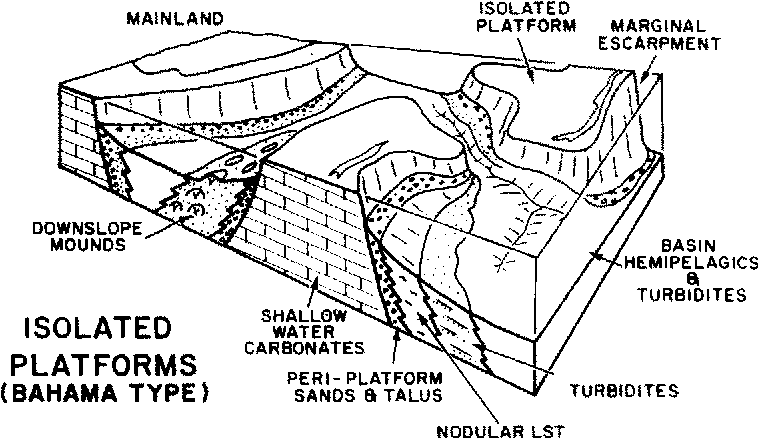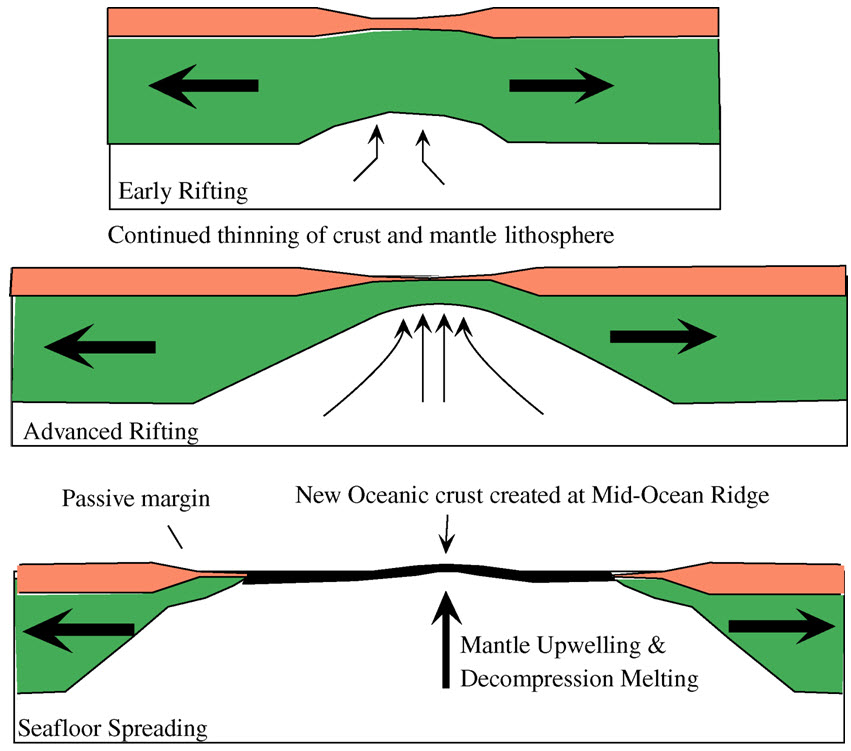43 passive continental margin diagram
Active and passive continental margins - University of Oregon Passive continental margins are found along the remaining coastlines. is minimal and the earth's weathering and erosional processes are winning. This leads to lots of low-relief (flat) land extending both directions from the beach, long river systems, and the accumulation of thick piles of sedimentary debrison the relatively Continental Margin - The shape of the land, Forces and ... The passive continental margins of eastern North America, eastern South America, western Africa, and western Europe began to form about 200 million years ago when Pangaea began to break up. The rift or crack that caused them to split, known as the Mid-Atlantic Ridge, now lies on Two types of continental margins exist: active margins and passive ...
The Art and the Science of Psychopharmacology for ... 15.11.2021 · for Quebec ATH —– ABB Historique du raccourcissement des problèmes —– Abréviation du VRC —– Croatie ANM Abréviation —– AAI Abréviation sans signification —– "Abréviations, acronymes et initiales "ABD —– Retiré AXR —– Rayon abdominal AUJ —– Aberdeen University Journal AZV —– Abfallzweckverband AYN —– Réseau de la jeunesse …

Passive continental margin diagram
earthref.org Margins located at the edges of diverging plates are called . passive margins. as these conditions are characterized by relatively little earthquake or volcanic activity. Margins at the edges of converging plates are called . active margins. These locations see frequent volcanic or earthquake activity. Passive margins are typical of the Atlantic, while active margins are common in the Pacific. Passive margin - Wikipedia A passive margin is the transition between oceanic and continental lithosphere that is not an active plate margin. A passive margin forms by sedimentation above an ancient rift, now marked by transitional lithosphere. Continental rifting creates new ocean basins. Eventually the continental rift forms a mid-ocean ridge and the locus of extension moves away from the continent-ocean boundary. The transition between the continental and oceanic lithosphere that was originally created by rifting is kn Subduction initiation at passive continental margins: A ... Based on the previous numerical models, the SI at typical passive continental margin is not easy, due to the high rheological strength that resists the lithospheric collapse. Besides the local negative buoyancy and gravity instability, the external forces are generally required for the SI, which may come from different sources.
Passive continental margin diagram. Continental margin classification as a (A) passive or (B ... Download scientific diagram | Continental margin classification as a (A) passive or (B) active margin. (A) Passive margins form where from publication: Seascape Evolution on Clastic Continental ... 12.6 Sediment Distribution - Introduction to Oceanography Marine sediments are thickest near the continental margins (refer to figure 12.1.1) where they can be over 10 km thick. This is because the crust near passive continental margins is often very old, allowing for a long period of accumulation, and because there is a large amount of terrigenous sediment input coming from the continents. What's the Difference Between an Active and Passive ... The west coast is the active margin, and is the location of earthquakes, volcanoes, and mountains. The Eastern Seaboard is a passive margin, as is the Gulf Coast. These are the low-relief areas of our continent, and are the locations of such exciting places as New Jersey, the Barrier Islands, the swamps of Florida, and the Mississippi delta. Next 1.2 Continental Margins - Introduction to Oceanography A passive continental margin occurs where the transition from land to sea is not associated with a plate boundary. The east coast of the United States is a good example; the plate boundary is located along the mid Atlantic ridge, far from the coast. Passive margins are less geologically active. Figure 1.2.1 shows an idealized passive margin.
Provenance, tectonic setting and source-area ... In these diagrams, the tectonic settings were divided into four types: oceanic island arc (OIA), continental island arc (CIA), active continental margin (ACM), and passive continental margin (PCM). Almost all samples from the Shiqianfeng Formation plot in the area of ACM field of the TiO 2 versus MgO + Fe 2 O 3 plot (Fig. 12 a). Transition from a passive continental margin to an active ... The U.S. Department of Energy's Office of Scientific and Technical Information Continental margin - Wikipedia This is known as the continental borderland. Passive margins are often located in the interior of lithospheric plates, away from the plate boundaries, and lack major tectonic activity. They often face mid-ocean ridges. PDF Oceans, Seafloor, and Continental Margins BLOCK DIAGRAM OF A PASSIVE MARGIN • A broad shelf leading to a slope characterize passive continental margins •The continental rise is typified by the overlapping deposits of submarine fans composed of turbidity current‐transported sediments.
Magmatisme Tholeitik pada Active Continental Margin di ... terbentuk dari tatanan tektonik Active Continental Margin (ACM) dengan karakteristik anomali unsur Ta (Tantalum) yang cukup signifikan (Ta = 0,70 - 1,98 ppm) dibanding dengan basal vulkanik Gede (Jawa Barat; Ta = 0,26 - 0,40 ppm) yang bersifat kalk-alkalin yang sama-sama terbentuk dari tatanan tektonik ACM. Batuan tholeiitic Introduction to Margin Setting An overview of Margin Setting: Continental Margin Setting, Passive Margin Setting, Active Margin Setting, Plate Margin Setting - Sentence Examples Divergent Plate Boundary—Passive Continental Margins ... The Atlantic and Gulf coasts show the classic form of a passive continental margin: a low-lying coastal plain, broad continental shelf, then a steep continental slope, gentle continental rise, and flat abyssal plain. This topography is a consequence of the transition from thick continental to thin oceanic crust. what are the three parts of the continental margin ... A passive margin is the transition between oceanic and continental lithosphere that is not an active plate margin. A passive margin forms by sedimentation above an ancient rift, now marked by transitional lithosphere. Continental rifting creates new ocean basins. What is continental margin Upsc? Continental Shelf
Active vs Passive Continental Margins Diagram | Quizlet Start studying Active vs Passive Continental Margins. Learn vocabulary, terms, and more with flashcards, games, and other study tools.
Forced Subduction Initiation at Passive Continental ... Subduction initiation (SI) at passive continental margin plays a key role in the Wilson cycle of plate tectonics; however, the long-lived, stable Atlantic-type margin challenges this hypothesis. The spontaneous SI at passive margin is difficult, which could be instead induced by far-field tectonic forces.
Passive margins | Norges Geologiske Undersøkelse Passive margins (also known as rifted margins) mark the sites where continents have rifted apart to become separated by an ocean. Thus, passive margins consist of a seawards tapering wedge of continental crust that is dissected by faults, overlain by sedimentary basins and juxtaposed with oceanic crust. At many margins, magmatic products extruded ...
Map showing the locations of active and passive ... Download scientific diagram | Map showing the locations of active and passive continental margins and the eight ocean regions described in the text. from publication: Geomorphology of the oceans ...
PDF CARBONAm PLATFORMS OF PASSIVE (EXTENSIONAL) CONTINENTAL ... passive or extensional continental margins, ranging in age from mid-Proterozoic to Holocene. These passive (or Atlantic-type) continental margins may extend out from cratons into marginal basins located behind magmatic arcs, or they border major ocean basins (Heezen, 1974).
PDF Ch. 11 Mountain Building - LCPS 2 types of Continental Margins: Active continental margin and Passive continental margin •Active Continental Margin -occur along plate boundaries (where plates are actively moving) -This is where mountain building takes place!! -Ex.) Nazca Plate (oceanic crust) subducting beneath South American Plate (causing mountains to form, earthquake
Subduction of a rifted passive continental margin: the ... In terms of end members, the type of subducted continental crust is either (1) normal thick continental crust or (2) the crust of a rift zone later transformed to a passive margin, which is influenced by strong extension, high-temperature metamorphism due to thinning of even the subcontinental mantle lithosphere and intense bimodal magmatism.
Solved In the diagrams below boxes and letters are ... Transcribed image text: In the diagrams below boxes and letters are covering the name of the corresponding ocean floor features and types of continental margins. PLEASE NOTICE THAT A and B are the names of the two different types of continental margins while a b c d represent specific sea-floor features within that type of continental margin. 1000 2000 3000 m Continental Crust Floor 4000 5000 Oceanic Crust PLAIN Answer the following questions 1.
Passive Continental Margin Diagram - Quizlet Start studying Passive Continental Margin. Learn vocabulary, terms, and more with flashcards, games, and other study tools.
Solved 1. Draw a diagram of a passive continental margin ... Draw a diagram of a passive continental margin and another of an active continental margin. Label the following as appropriate on each diagram: continental and oceanic crust, continental shelf, continental slope, continental rise, ocean floor, shelf break, and trench.
Passive Margin - an overview | ScienceDirect Topics Passive Margin. Passive margins (sometimes called rifted margins) are places where extended and/or intruded continent grades the ocean basin formed by postrift spreading, and they give us some constraints on the state of the crust and lithosphere when breakup ended. From: Treatise on Geophysics (Second Edition), 2015. Related terms: Rifting; Subduction
36 passive continental margin diagram - Diagram Online Source Passive continental margin diagram. (Princess プリンセス)埼玉所沢市所沢駅西口徒歩1分 TEL:080-9194-5151 絶対安心安全な招福メンズエステリラクゼーションマッサージ店をご紹介致します。 We only introduce the trusted and great Massage relaxation SPA Salon in Japan.
Subduction initiation at passive continental margins: A ... Based on the previous numerical models, the SI at typical passive continental margin is not easy, due to the high rheological strength that resists the lithospheric collapse. Besides the local negative buoyancy and gravity instability, the external forces are generally required for the SI, which may come from different sources.
Passive margin - Wikipedia A passive margin is the transition between oceanic and continental lithosphere that is not an active plate margin. A passive margin forms by sedimentation above an ancient rift, now marked by transitional lithosphere. Continental rifting creates new ocean basins. Eventually the continental rift forms a mid-ocean ridge and the locus of extension moves away from the continent-ocean boundary. The transition between the continental and oceanic lithosphere that was originally created by rifting is kn
earthref.org Margins located at the edges of diverging plates are called . passive margins. as these conditions are characterized by relatively little earthquake or volcanic activity. Margins at the edges of converging plates are called . active margins. These locations see frequent volcanic or earthquake activity. Passive margins are typical of the Atlantic, while active margins are common in the Pacific.


































![PDF] Reassessing the structural and geomorphic evolution of a ...](https://d3i71xaburhd42.cloudfront.net/37f6e06f911d9849bad0a67aac3400554e61fd19/26-Figure2-2-1.png)
Comments
Post a Comment